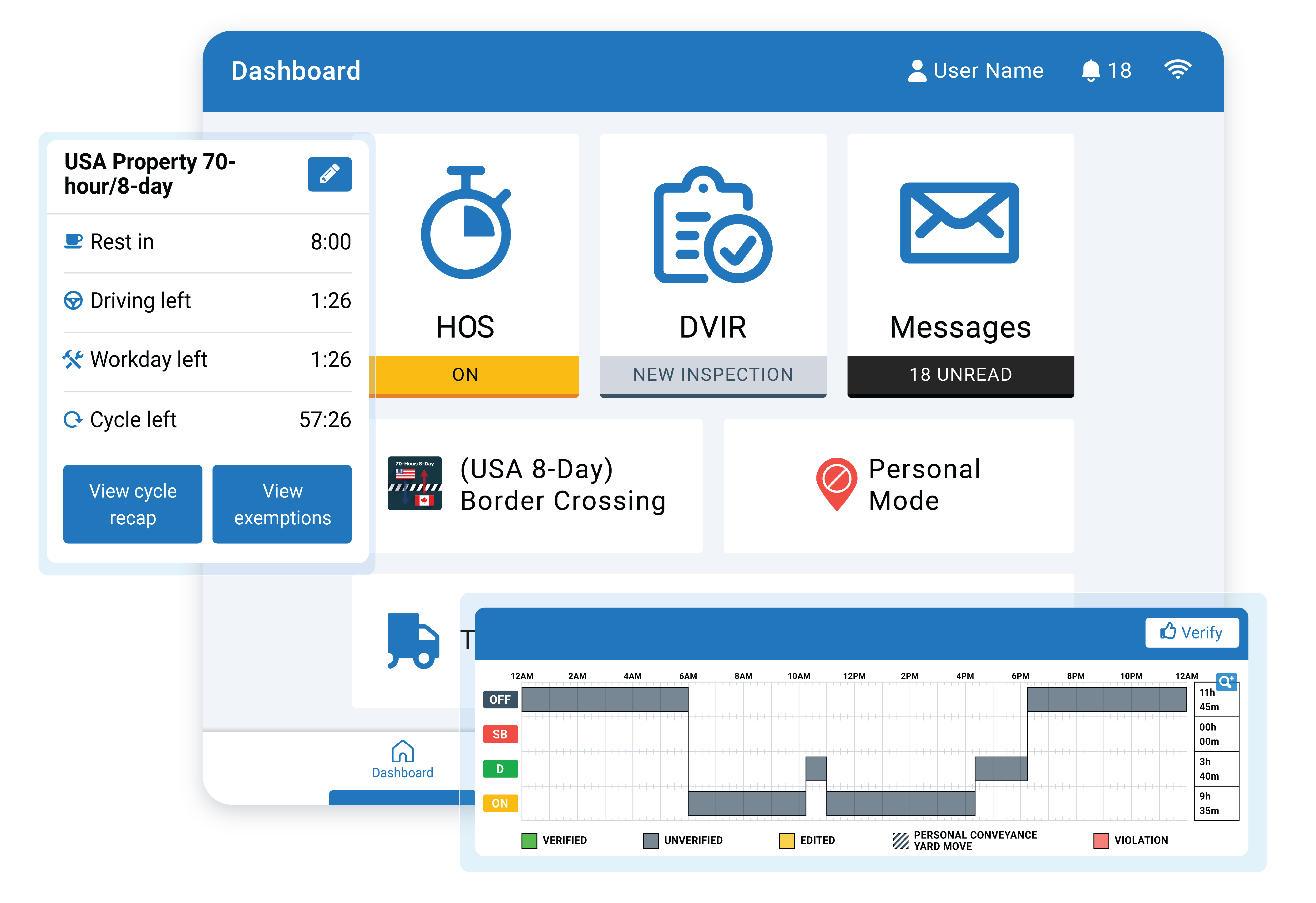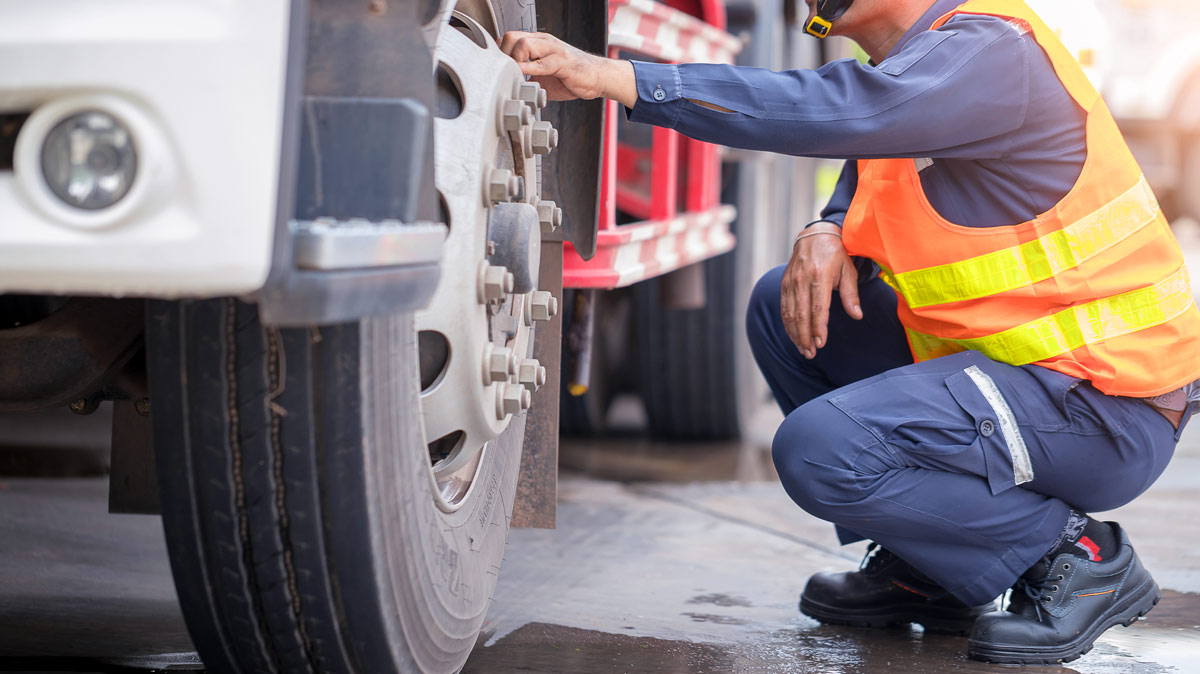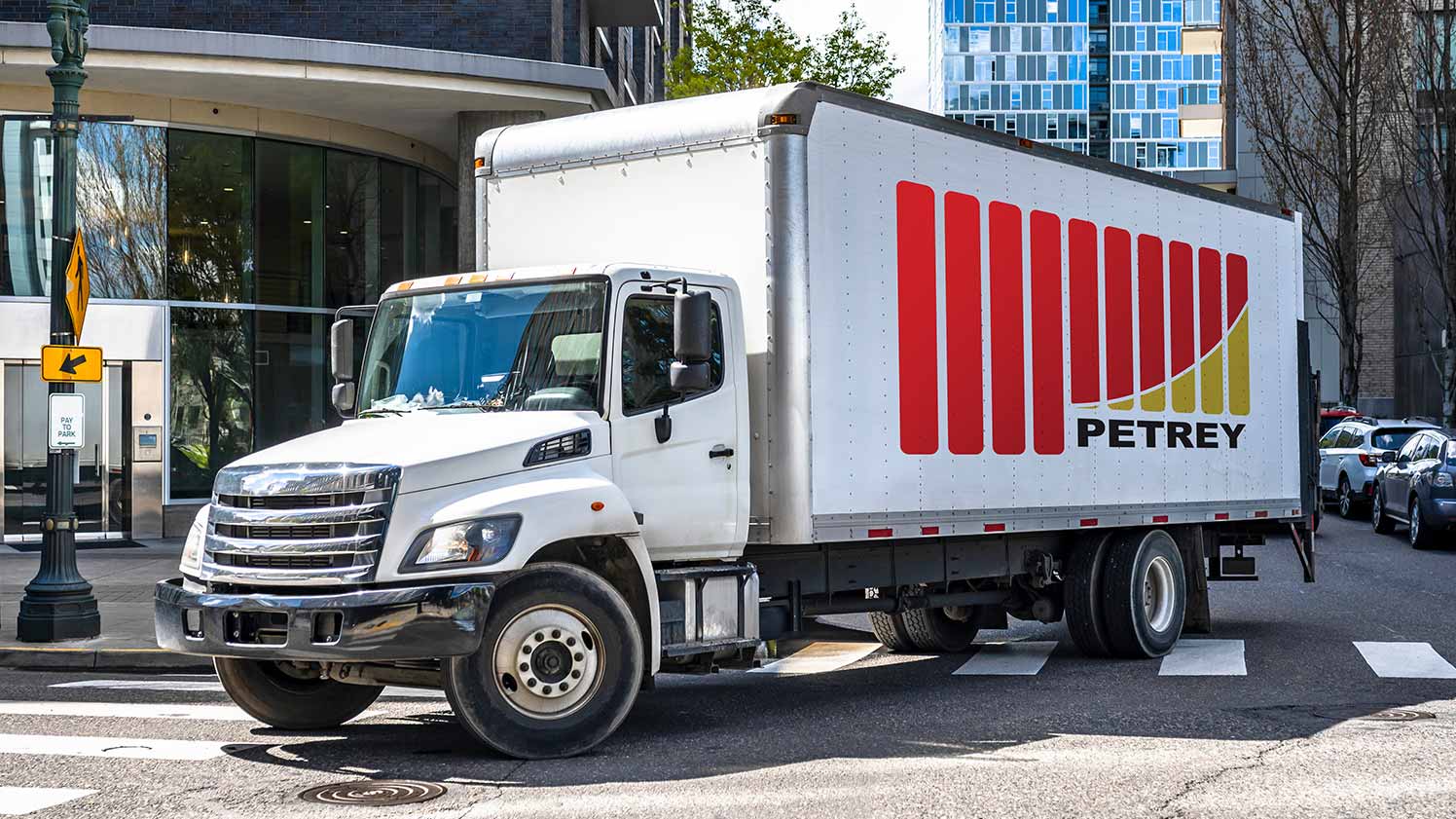DVIR
Driver Vehicle Inspection Report (DVIR)
Compliance made easy: Simplify mandatory pre-trip and post-trip inspections using the intuitive Geotab Drive app, helping to minimize violations, fines, and safety-related roadside incidents.
Streamlined maintenance: Switch to paperless reporting. Fleet managers receive real-time defect notifications, allowing for faster maintenance scheduling and reduced unplanned asset downtime.
All-in-one platform: Streamline driver workflow with Geotab Drive, which seamlessly combines DVIR reporting with ELD compliance, driver ID, and messaging within a single easy-to-use app.

What is DVIR?
Why is DVIR needed?
40%
reduction in speeding
Wiseway Supply Ltd
13%
decrease in severe alerts related to driver safety
Plastic Express
Penalties for not completing an inspection


What does a vehicle inspection include?
- Brakes and air system
- Steering mechanism
- Lights and reflectors
- Tires, wheels, and rims
- Windshield wipers
- Rear view mirrors
- Coupling equipment and fifth wheels
- Safety and emergency equipment
Product
Geotab Drive

Video
A driver’s how to guide for DVIR
Case study
Supporting compliance and improving safety

Fleet compliance solutions from Geotab Marketplace
Have confidence in your ELD compliance with solutions that make ELD, HOS, DVIR and IFTA regulations easy to meet.